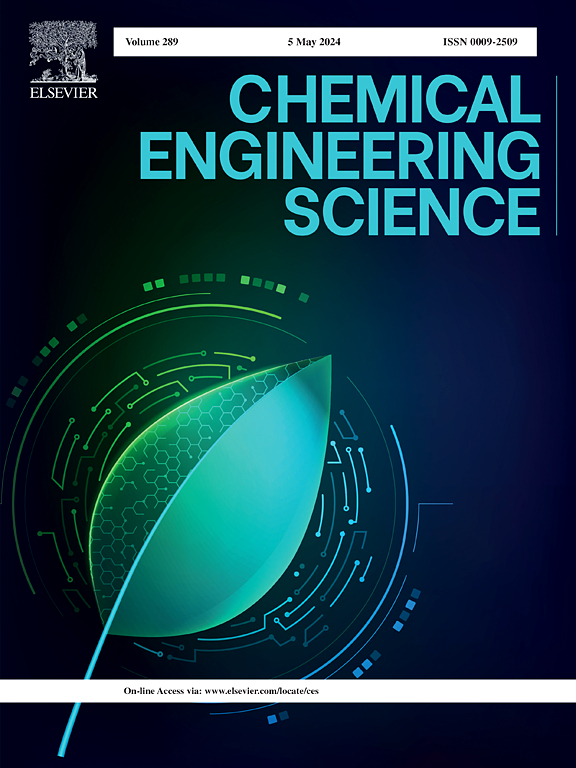模拟油滴在表面活性剂水溶液上扩散的反应动力学方法
IF 4.3
2区 工程技术
Q2 ENGINEERING, CHEMICAL
引用次数: 0
摘要
研究了油滴在含有临界胶束浓度(CMC)不同的表面活性剂的水溶液上的扩散情况。使用时间分辨视频显微镜观察了分散油滴的去向。研究发现,油滴的投影面积最初由于扩散过程而增大,达到最大值,最后由于油滴溶解到大部分表面活性剂溶液中而减小。铺展和溶解这两种相互竞争的效应导致投影面积出现非单调的时间演变,我们使用反应动力学方法对其进行了建模。我们特别指出,A→B→C 形式的串联反应类似于实验中观察到的扩散-溶解过程。通过这种类比,我们可以估算出与油滴扩散和溶解相关的速率常数,并可进一步用于量化表面活性剂在溶液中的 CMC。本文章由计算机程序翻译,如有差异,请以英文原文为准。
A reaction kinetics approach to model the spreading of oil drop on aqueous surfactant solutions
The spreading of oil drops on aqueous solutions containing surfactants of various concentrations varying across critical micellar concentration (CMC) is investigated. The fate of the dispensed oil drop was visualized using time-resolved video-microscopy. The projected area of the oil drop is found to increase initially due to the spreading processes, reaches a maximum, and finally decreases due to the dissolution of the oil drop into the bulk of the surfactant solution. The two competing effects of spreading and dissolution lead to a non-monotonic temporal evolution of the projected area, which is further modeled using a reactions kinetic approach. In particular, we show that a series reaction of the form A→B→C is analogous to the spreading-dissolution process observed in our experiments. This analogy allows us to estimate the rate constants associated with the spreading and dissolution of the oil drop, which can be further used to quantify the CMC of the surfactants in solutions.
求助全文
通过发布文献求助,成功后即可免费获取论文全文。
去求助
来源期刊

Chemical Engineering Science
工程技术-工程:化工
CiteScore
7.50
自引率
8.50%
发文量
1025
审稿时长
50 days
期刊介绍:
Chemical engineering enables the transformation of natural resources and energy into useful products for society. It draws on and applies natural sciences, mathematics and economics, and has developed fundamental engineering science that underpins the discipline.
Chemical Engineering Science (CES) has been publishing papers on the fundamentals of chemical engineering since 1951. CES is the platform where the most significant advances in the discipline have ever since been published. Chemical Engineering Science has accompanied and sustained chemical engineering through its development into the vibrant and broad scientific discipline it is today.
 求助内容:
求助内容: 应助结果提醒方式:
应助结果提醒方式:


